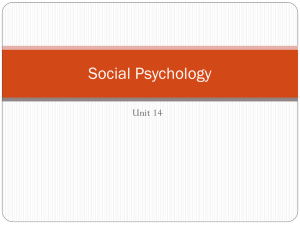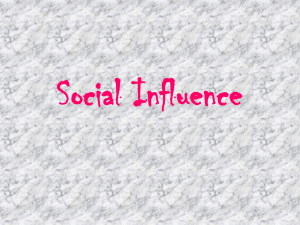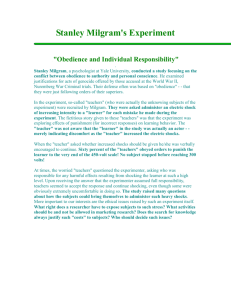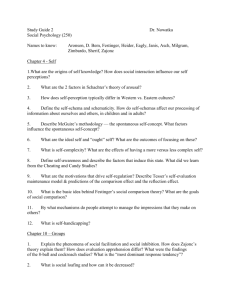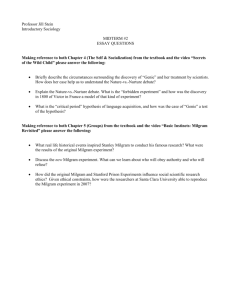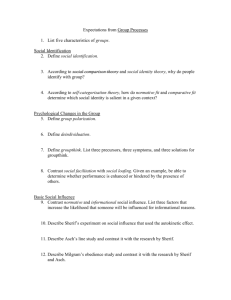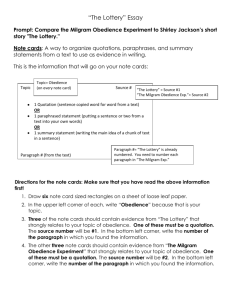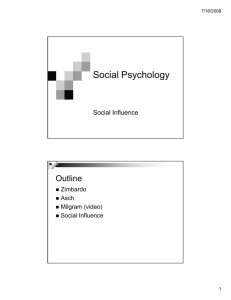The agency theory of obedience as proposed by Milgram (1973,...
advertisement
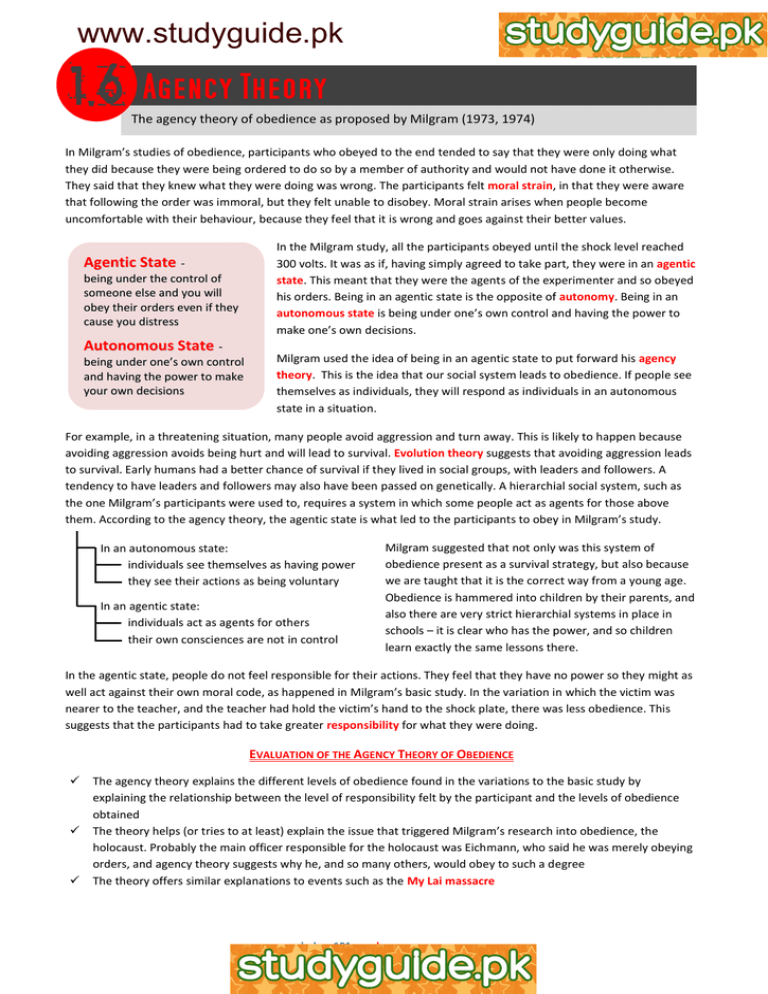
www.studyguide.pk The agency theory of obedience as proposed by Milgram (1973, 1974) In Milgram’s studies of obedience, participants who obeyed to the end tended to say that they were only doing what they did because they were being ordered to do so by a member of authority and would not have done it otherwise. They said that they knew whatt they were doing was wrong. The participants felt moral strain,, in that they were aware that following the order was immoral, but they felt unable to disobey. Moral strain arises when people become uncomfortable omfortable with their behaviour, because they feel that that it is wrong and goes against their better values. In the Milgram study, all the participants obeyed until the shock level reached 300 volts. It was as if, having simply agreed to take part, they were in an agentic state This meant that they were the agents of the experimenter and so obeyed state. his orders. Being in an agentic state is the opposite of autonomy. Being in an autonomous state is being under one’s own control and having the power to make one’s own decisions. Agentic State - being under the control of someone else and you will obey their orders even if they cause you distress Autonomous State - being under one’s own control and having the power to make your own decisions Milgram Milg ram used the idea of being in an agentic state to put forward his agency theory. This is the idea that our social system leads to obedience. If people see theory. themselves as individuals, they will respond as individuals in an autonomous state in a situation. For example, in a threatening situation, many people avoid aggression and turn away. This is likely to happen because avoiding aggression avoids being hurt and will lead to survival. Evolution theory suggests that avoiding aggression leads to survival. Early humans had a better chance of survival if they lived in social groups, with leaders and followers. A tendency to have leaders and followers may also have been passed on genetically. A hierarchial social system, such as the one Milgram’s participants were used to, requires a system in which some people act as agents for those above them. According to the agency theory, the agentic state is what led to the participants to obey in Milgram’s study. In an autonomous state: individuals see ee themselves as having power they see their actions as being voluntary In an agentic state: individuals act as agents for others their own consciences are not in control Milgram suggested that not only was this system of obedience present as a survival strate strategy, but also because we are taught that it is the correct way from a young age. Obedience is hammered into children by their parents, and also there are very strict hierarchial systems in place in schools – it is clear who has the power, and so children learn arn exactly the same lessons there. In the agentic state, people do not feel responsible for their actions. They feel that they have no power so they might as well act against their own moral code, as happened in Milgram’s basic study. In the variation in which the victim was nearer to the teacher, and the teacher had hold the victim’s hand to the shock plate, there was less obedience. This suggests that the participants had to take greater responsibility for what they were doing. EVALUATION OF THE AGENCY THEORY OF OBEDIENCE The agency theory explains the different levels of obedience found in the variations to the basic study by explaining the relationship between the level of responsibility felt by the participant and the levels of obedience obtained The theory helps (or tries to at least) explain explain the issue that triggered Milgram’s research into obedience, the holocaust. Probably the main officer responsible for the holocaust was Eichmann, who said he was merely obeying orders, and agency theory suggests why he, and so many others, would obey to such a degree The theory offers similar explanations to events such as the My Lai massacre www.aspsychology101 aspsychology101.wordpress.com www.studyguide.pk However, one of the weaknesses of the theory is that there are other possible explanations for obedience, such as social power. French and Raven (1959) proposed five different kinds of power: Legitimate power is held by those in certain roles, usually those of authority; Milgram’s role would have had legitimate power Legitimate Power Referent Power Reward power is held by those with certain resources resources; Milgram may have had reward power as he way paying the participants Reward Power Expert Power Coercive Power Coercive power is held by those who can punish another; Milgram gave the participants a small shock, so he may have felt he could punish them Expert power is held by those with knowledge; the participants would have seen Milgram as someone with knowledge Referent power is held by those who are able to win people over; the participants would not have seen Milgram to hold this type of power Also, one of the biggest criticisms of Milgram’s agency theory is that it is just a description and not an explanation. Many people view the theory as more of a description of how society works than an explanation. explanation. It suggests that the participants obeyed because they were agents of authority. However, obedience is defined as obeying authority figur figures, so a theory explaining obedience should offer more detail into why it is that people follow orders against their better judgement under given situations. www.aspsychology101 aspsychology101.wordpress.com
